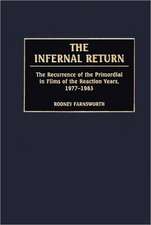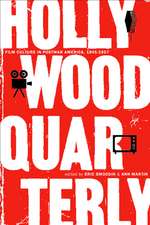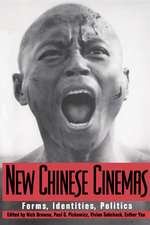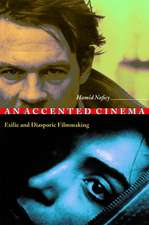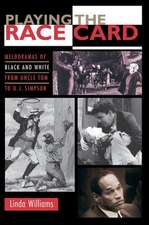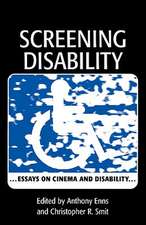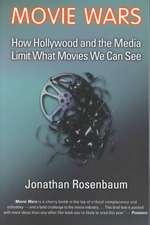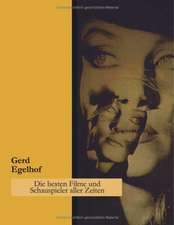Routledge Handbook of Indian Cinemas
Editat de K. Gokulsing, Wimal Dissanayakeen Limba Engleză Paperback – 22 mai 2018
Now available in paperback, the Handbook combines a historical and thematic approach to discuss how Indian cinemas need to be understood in their historical unfolding as well as their complex relationships to social, economic, cultural, political, ideological, aesthetic, technical and institutional discourses. The thematic section provides an up-to-date critical narrative on diverse topics such as audience, censorship, film distribution, film industry, diaspora, sexuality, film music and nationalism.
The Handbook provides a comprehensive and cutting edge survey of Indian cinemas, discussing Popular, Parallel/New Wave and Regional cinemas as well as the spectacular rise of Bollywood. It is an invaluable resource for students and academics of South Asian Studies, Film Studies and Cultural Studies
| Toate formatele și edițiile | Preț | Express |
|---|---|---|
| Paperback (1) | 467.92 lei 6-8 săpt. | |
| Taylor & Francis – 22 mai 2018 | 467.92 lei 6-8 săpt. | |
| Hardback (1) | 1618.51 lei 6-8 săpt. | |
| Taylor & Francis – 9 apr 2013 | 1618.51 lei 6-8 săpt. |
Preț: 467.92 lei
Nou
Puncte Express: 702
Preț estimativ în valută:
89.56€ • 97.32$ • 75.28£
89.56€ • 97.32$ • 75.28£
Carte tipărită la comandă
Livrare economică 21 aprilie-05 mai
Preluare comenzi: 021 569.72.76
Specificații
ISBN-13: 9781138311480
ISBN-10: 1138311480
Pagini: 488
Ilustrații: 34
Dimensiuni: 174 x 246 x 30 mm
Greutate: 0.89 kg
Ediția:1
Editura: Taylor & Francis
Colecția Routledge
Locul publicării:Oxford, United Kingdom
ISBN-10: 1138311480
Pagini: 488
Ilustrații: 34
Dimensiuni: 174 x 246 x 30 mm
Greutate: 0.89 kg
Ediția:1
Editura: Taylor & Francis
Colecția Routledge
Locul publicării:Oxford, United Kingdom
Public țintă
Postgraduate and UndergraduateCuprins
1. Introduction Part 1: Historical Analysis 2. From Cultural Backwardness to the Age of Imitation: An Essay in Film History 3. The Indian New Wave 4. Regional Cinemas: 4.1 ‘Bengali’ Cinema: Its Making and Unmaking 4.2 Assamese Cinema: Dreams, Reality and Dichotomies 4.3 Odia (the new name for Oriya) Cinema at 75 4.4 Marathi Cinema: The Exile, the Factory and Fame 4.5 Gujarati Cinema: Stories of Sant, Sati, Shethani and Sparks Afew 4.6 Matriliny to Masculinity: Performing Modernity and Gender in Malayalam Cinema 4.7 Kannada Cinema and Princely Mysore 4.8 The Star-politicians of Tamil Nadu: The origin and emergence 4.9 Beyond the Star: Telegu Comedy Films and Realpolitik in Andhra Pradesh 4.10 Mapping the invisible world of Bhojpuri cinema and its changing audience 4.11 From Lahore to Bombay…and Vancouver: The Chequered Journey of Punjabi Cinema Part 2: Themes and Perspectives 5. The evolution of representing Female sexuality in Hindi Cinema 1991 - 2010 6. Queer Times in Bollywood 7. The Scale of Diasporic Cinema: Negotiating National and Transnational Cultural Citizenship 8. The Shifting Terrains of Nationalism and Patriotism in Indian Cinemas 9. Digitizing the National Imaginary: Technology and Hybridization in Hindi Film Songs of the Post-Liberalization Period 10. Trends in Hindi Film music with special reference to Socio-Economic and Political Changes 11. Music in Mainstream Indian Cinema 12. Scriptwriting- In and Out of the Box 13. The Fictions of Science and Cinema in India 14. Film Censorship in India: Deconstructing an Incongruity 15. Advertising and marketing of the Indian Cinema Part 3: The Business of Indian Cinemas 16. Film Distribution: The Changing Landscape 17. Corporatization and the Hindi Film Industry 18. Indian Cinemas: Acknowledging Property Rights 19. Foundations, Movements and Dissonant Images: documentary film and its ambivalent relations to the nation state Part 4: Cinema Halls and Audiences 20. Active Audiences and the Experience of Cinema 21. Hindi film audiences outside South Asia 22. Cinema as Social Space: The Case of the Multiplex 23. Virtual Darshan: social networking and virtual communities in the Hindi film context 24. Conclusion
Notă biografică
K. Moti Gokulsing is Senior Visiting Research Fellow at the University of East London, UK. He is the co-founder and co-editor of the journal South Asian Popular Culture published by Routledge. His publications include Soft-Soaping India: the world of Indian televised soap operas (2004).
Wimal Dissanayake teaches in the Academy for Creative Media at the University of Hawaii, USA. He has published widely on Indian cinema, and is co-editor of Popular Culture in a Globalised India (Routledge 2009) with K. Moti Gokulsing.
Wimal Dissanayake teaches in the Academy for Creative Media at the University of Hawaii, USA. He has published widely on Indian cinema, and is co-editor of Popular Culture in a Globalised India (Routledge 2009) with K. Moti Gokulsing.
Recenzii
"The fresh approaches of this landmark text will no doubt serve to open up new ways of understanding this most prolific of film-producing countries." - Shamira A. Meghani, Asian Affairs
Descriere
India is the largest film producing country in the world and its output has a global reach. After years of marginalisation by academics in the Western world, Indian cinemas have moved from the periphery to the centre of the world cinema in a comparatively short space of time. Bringing together contributions from leading scholars in the field, this Handbook looks at the complex reasons for this remarkable journey.


